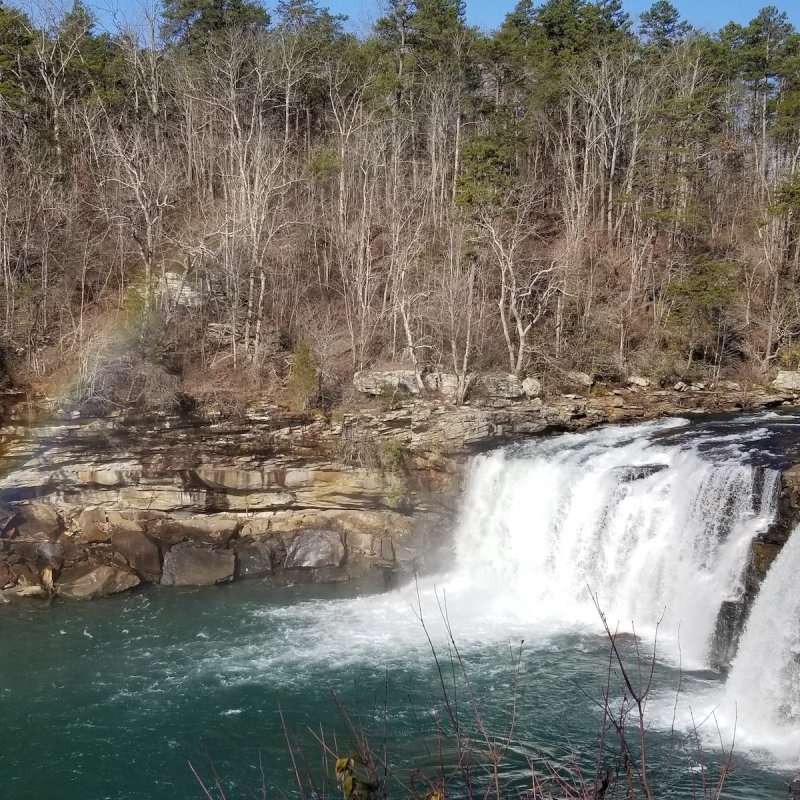
Joe Cuhaj
Americans are truly blessed to have the National Park Service (NPS) to preserve the natural wonders of our country — its waterfalls, canyons, mountains, wilderness areas. But the Park Service protects more than just our beautiful landscapes. It also protects and preserves our cultural history as well. National Park Service sites may include NPS or locally curated museums. Others might simply be historic drives to sites that commemorate an event in our nation’s past. While still others are the iconic images we all think of when it comes to the park service: tremendous landscapes and vistas.
Videos by TravelAwaits
Like many, I didn’t realize just how many National Park administered sites there are in Alabama, but during my many travels across the state, I discovered there are quite a few — 11 in all that run the gambit of park service sites and facilities. These sites not only paint a vivid picture of the beauty of Alabama but also its history from tragedy to triumph and all make for must-see vacation destinations.
There are four natural areas protected by the Park Service in Alabama, and all four make for amazing vacation destinations.
1. Little River Canyon National Preserve
One of the most popular tourist attractions in Alabama is Little River Canyon National Preserve in Fort Payne. Established in 1992, the preserve protects one of the deepest canyons east of the Mississippi, over 600-feet in many places, and its namesake river that carved this beautiful gorge.
Little River itself is unique in that it is one of the few rivers that flows along the top of a mountain, in this case, Lookout Mountain. One of the most striking features of a visit to the 15,288-acre preserve is Little River Falls, a 45-foot-tall block-type waterfall that really puts on a show. Visitors can view the falls up close at the Little River Canyon Falls Park on Alabama Highway 35 in Mentone where an ADA-accessible boardwalk leads to the edge of the falls. The parking lot can hold 100 cars and RVs and there are picnic tables with grills and restrooms.
A visit to the canyon should begin with a stop at the Little River Canyon Center to learn about the canyon and its early inhabitants. There is a great little boardwalk here that leaves the center for views of the falls.
There are plenty of hiking opportunities in the preserve — 26-miles of trail to be exact — ranging from easy walking paths like the Beaver Pond Trail to the difficult Eberhart that takes you straight down the canyon wall to the bottom. Just remember, when talking canyons, what goes down has to come back up again.
Another way to visit the preserve is by driving the 23-mile long Canyon Rim Parkway with eight incredible overlooks of the canyon.
Pro Tips
The Canyon Rim Parkway drive is truly spectacular in fall with the trees blazing with color. At the southern end of the drive, you will find Canyon Mouth Park, a great place to sit at one of the many picnic tables, fire up the grill, and have lunch. A one-mile trail leads you down to the river. There is a $15 per vehicle day-use fee.
Another nice little hike you should experience at the falls is the short 1.5-mile moderate-to-difficult hike from Little River Canyon Falls Park to Martha’s Falls (also known as Little Falls and the Hippie Hole) for beautiful canyon views and a swim in the pool below the smaller falls. Swim with caution. The climb down — and back up — from the river is pretty steep.
And for the truly adventurous, how about a little white-water kayaking? Little River is a popular destination for experienced ’yakers with class II to class VI rapids running from the base of the falls to Canyon Mouth Park.

2. Russell Cave National Monument
Hidden away in the northeast corner of Alabama on County Road 98 in the town of Bridgeport, there is an incredible geologic formation known as Russell Cave. The cave was formed millions of years ago by the action of underground springs creating a tall and deep rock shelter that Native Americans called home 10,000 years ago. In fact, the cave is recognized as holding the most complete record of prehistoric history and culture in the Southeast.
Begin your visit by watching the short video at the visitors center that will give you a little more background before you head inside the enormous rock shelter via ADA-accessible boardwalk. Check with the rangers at the center for times of guided tours.
The cave itself is not accessible to visitors, but it is ranked the third-longest in Alabama and is listed as the 90th-longest in the country.
Pro Tips
Besides the boardwalk trail, there is a moderate-to-difficult 1.2-mile nature trail that winds its way steeply up the side of the mountain behind the cave. The trail is dotted with interpretive signs describing life here thousands of years ago. Admission to Russell Cave is free. The park is open seven days a week from 8 a.m. to 4:30 p.m., closed on federal holidays.

3. Natchez Trace Parkway
An amazing driving tour awaits you along the Natchez Trace Parkway. The highway stretches 444 miles from Natchez, Mississippi, to just southwest of Nashville, Tennessee, clipping a short corner of northwest Alabama. The highway closely follows the original trace that was used by Native Americans 10,000 years ago, then European settlers, slave traders, and future presidents, and today provides a multitude of recreational activities including hiking (more on that in a moment), camping, biking, and fishing.
The central section of the parkway is a 33-mile-long section in northwest Alabama. While short in length, there is plenty to do and see. History abounds with stops at Pope’s Tavern and Museum from the early 1800s, Helen Keller’s birthplace, the home of the “Father of the Blues” W.C. Handy, and the Wichahpi Commemorative Stone Wall. The amazing wall was hand-built over 30-years by Tom Hendrix to honor his great-great-grandmother who was removed from the land during the Trail of Tears.
For horse lovers, a stop at the Sacred Way Sanctuary, where the relationship between the horse and Native Americans is honored at the museum and wildlife preserve, is a must. The sanctuary is the home of about 90 Indigenous American Horses, whose origins can be traced back to the Native People of North America. The Interpretive Center and Museum takes you on a journey back in time to as far back as 13,000 years ago and the last ice age to the present to trace this history.
There are plenty of eateries along the route including one you cannot miss — the Southern Farm Table Restaurant and Bakery that serves up some of the finest Southern dishes and deserts around. And when it comes to finding a place to rest your weary head, there are many national hotel chains in the towns of Tuscumbia and Florence, but the Farmhouse Sanctuary B and B in Florence is highly recommended for its distinctly Southern atmosphere. The Farmhouse is a real sanctuary, too, where many horses, sheep, and goats have been rescued and will be seen grazing in the pastures.
Pro Tip
The parkway is spectacular when the hardwoods along the route burst into fiery fall colors. Keep in mind that the speed limit on the parkway is 50 miles an hour and can drop much lower in many areas. Commercial vehicles are not allowed on the parkway.
4. Natchez Trace National Scenic Trail
The entire 444 miles of the Natchez Trace Parkway is dotted with beautiful hiking trails that make up the Natchez Trace National Scenic Trail. These paths lead to babbling brooks, waterfalls, and overlooks. One of them is the Rock Spring Nature Trail in Florence.
The trail is an easy walking half-mile loop and what it lacks in length is made up for in the beauty that surrounds you. As you hike the forest you will cross the babbling Colbert Creek over a set of steppingstones, beaver ponds dammed by the furry creatures that make the perfect habitat for birds and turtles, and a bubbling spring.
Pro Tip
Rock Spring is located just after crossing the Tennessee River on the Parkway in Florence on Rock Spring Road.
It’s worth your while to make a stop at Parkway milepost 320.3 near Rock Spring to see Buzzard Roost Springs, too. The spring was an important stop for travelers on the original Natchez Trace where they could water their horses and get a bite to eat at an inn built here by Levi Colbert. The inn (or what they used to call a “stand”) is no longer visible, but a very short trail leads you down to the spring, a beautiful quiet haven in a shady glen for weary travelers, including present-day travelers.
Editor’s Note: For more Natchez Trace inspiration, consider our picks for Must-See Sites Along The Natchez Trace Parkway, and don’t miss Joe’s insights on 7 Incredible And Moving National Parks To Explore In Alabama.
